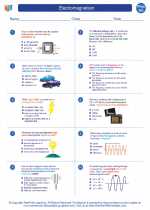Electromagnetism -> historical interpretation
Historical Interpretation
Historical interpretation is the process of understanding and explaining past events and their significance. It involves analyzing primary and secondary sources, examining different perspectives, and constructing a narrative that captures the complexities of historical events.
Key Concepts
- Primary Sources: These are first-hand accounts or original documents from the time period being studied, such as letters, diaries, photographs, and artifacts. Analyzing primary sources is crucial for understanding historical events from the perspective of those who experienced them.
- Secondary Sources: These are interpretations and analyses of primary sources by historians and scholars. They provide context and analysis of historical events and help to construct a broader understanding of the past.
- Perspectives: Historical interpretation requires considering different viewpoints and biases. Understanding the various perspectives of individuals and groups involved in historical events is essential for constructing a balanced interpretation.
- Critical Thinking: Historical interpretation involves critical thinking skills, such as evaluating the reliability of sources, assessing causation and continuity, and making connections between past and present events.
- Narrative Construction: Historians construct narratives to make sense of historical events. These narratives aim to capture the complexities, contradictions, and ambiguities of the past, while also providing a coherent explanation of events.
Study Guide
To effectively engage with historical interpretation, consider the following study guide:
- Start by familiarizing yourself with primary and secondary sources related to the historical event or period you are studying. Pay attention to the different perspectives and biases presented in these sources.
- Practice critical thinking by evaluating the reliability and credibility of the sources. Consider the motivations and intentions of the authors of the sources.
- Compare and contrast different interpretations of the same historical event. Identify areas of agreement and disagreement among historians and scholars.
- Consider the broader historical context surrounding the events being studied. How did social, political, and cultural factors influence the outcomes of these events?
- Construct a narrative that captures the complexities and nuances of the historical event. Consider the cause-and-effect relationships, the motivations of the individuals involved, and the broader implications of the event.
- Reflect on the relevance of historical interpretation to contemporary issues and events. How does understanding historical interpretation contribute to a deeper understanding of the present?
By engaging with these key concepts and the study guide, you can develop a deeper understanding of historical interpretation and its significance in understanding the complexities of the past.
[Historical Interpretation] Related Worksheets and Study Guides:
.◂Physics Worksheets and Study Guides High School. Electromagnetism
Worksheet/Answer key Electromagnetism
Electromagnetism  Worksheet/Answer key
Worksheet/Answer key Electromagnetism
Electromagnetism  Worksheet/Answer key
Worksheet/Answer key Electromagnetism
Electromagnetism 

 Worksheet/Answer key
Worksheet/Answer key
 Worksheet/Answer key
Worksheet/Answer key

The resources above cover the following skills:
PHYSICAL SCIENCE (NGSS)
Energy
Students who demonstrate understanding can:
Design, build, and refine a device that works within given constraints to convert one form of energy into another form of energy.